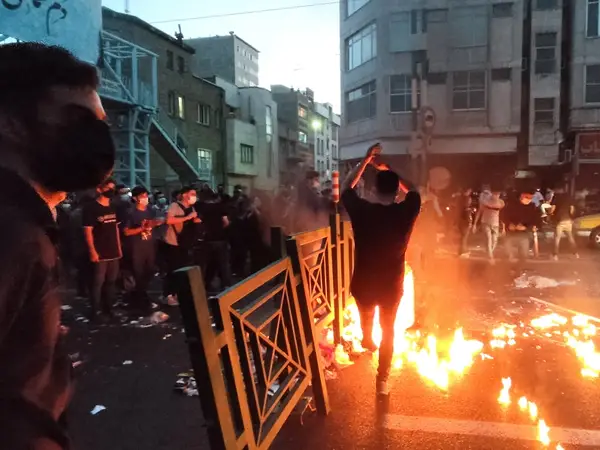Although Iranian conservatives appear to be divided over how to react to wave of protests, some are telling the government to use more force against protesters.
Meanwhile, some Iranian lawmakers continue to spread disinformation about the death in custody of a 22-year-old woman, Mahsa Amini, and her health condition before her arrest, to clear the hijab police of responsibility.
A group of about 13 hardliner lawmakers who advocated a harsher reaction to the protests might be seen as irrelevant in this juncture of widespread unrest, or these remarks might inflame the situation.
Esmail Zarei Kousha, the governor general of Kurdistan Province, who has also suggested that the government should take harsh measures against the leaders of the protests, has said at the same time in an interview with Hamshahri Online that lawmakers should avoid making unnecessary remarks.
Kousha has called the grandeur and momentum of this round of protests unprecedented and called on the people to dissuade their children from taking part in the protests.
In another development, Aftab News reported that the 13 lawmakers have suggested to the government to take harsher measures against those they claimed have been turning protests to the death of the hijab victim into “riots”.
However, according to Rouiydad24 news website, Iranian lawmakers are divided into at least four groups on how to react to the protests that have so far rocked over 80 cities in Iran as well as scores of smaller towns nearly all over the country.
However, all of these four groups have tried to reduce the root cause of the nationwide protests to dissatisfaction about hijab patrols, while the people in the streets are in a revolutionary mood against the who;e regime.
Roiuydad24 wrote that at least seven lawmakers are absolutely against the activities of the hijab patrol, at least 10 still support the hijab police despite its harsh treatment of young women including Mahsa Amini, while 8 lawmakers including Majles Speaker Mohammad Bagher Ghalibaf have taken ambiguous positions about the matter to stay on the safe side. Oddly enough, only seven of Iran's 290 lawmakers, including 4 hardliners and 3 reformists, have expressed sympathy with the family of the hijab victim. On the other hand, all of the 10 lawmakers who still support the hijab patrols, including former nuclear chief Fereidoun Abbasi, are the members of the ultraconservative Paydari Party.
Iranian social media users have been keen to lash out at politicians who ignore or belittle the protests.
Nearly all Twitter users who commented on a tweet by Tourism Minister Ezzatollah Zarghamiharshly criticized him for saying that law enforcers should act in a calculated way and crack down on "protest leaders who are linked to foreigners and have been trained to instigate riots." The comment was completely in line with the approach of security forces who attribute the protests to foreign elements particularly since 2017. Several Twitter users have responded that trained elements who instigate terror and riots during rallies are the members of Iran's security and intelligence organizations.
As news came in Wednesday afternoon that Instagram, as the only social media platform that was not officially banned in Iran, has been blocked, social media users warned that this could be sign that the regime is about to start its usual violent crackdown on the protests. Earlier on Wednesday, Communication Minister Isa Zarepour had said that new restrictions are likely to be imposed to limit Internet access as a way of confronting with the protests.
